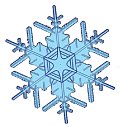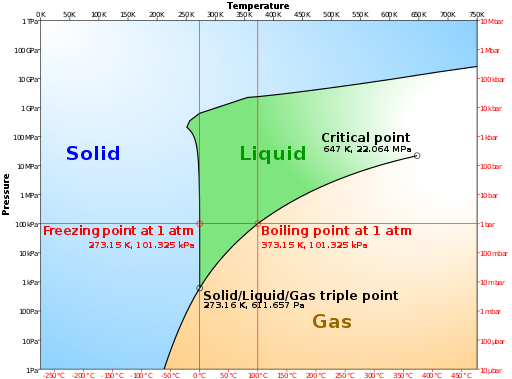 The short answer is no. Despite what you may have heard some snowflakes are exactly the same shape and size as other snowflakes, at least to the naked eye.
The short answer is no. Despite what you may have heard some snowflakes are exactly the same shape and size as other snowflakes, at least to the naked eye.
The long answer follows: Jon Nelson, a researcher with Ritsumeikan University in Japan, has studied snowflakes for fifteen years, and has some interesting insights into their delicate structures. He points out that the old adage that ‘no two snowflakes are alike’ might be true for larger snowflakes, but it does not hold true for smaller, simpler crystals that fall before they’ve had a chance to fully develop into the familiarly evocative hexagonal flakes. Regardless, the shape of snow crystals are incredibly diverse, this is partly due to their sensitivity to even the smallest temperature change as they fall through the clouds.
So, how do snowflakes form in the first place?
Put simply, at the heart of every snowflake is a minute grain of dust that was once floating in a cloud. Water vapor from the atmosphere condenses on this dust grain forming a droplet that freezes instantly (it’s a nucleation process to put it technically).
The ice crystals grow with hexagonal symmetry. The shape originates from the chemistry of the water molecule, which consists of two hydrogen atoms bonded to an oxygen atom, H-O-H. These atoms are not in a straight line though, they’re at an angle and this angle means that when several water molecules get hitched together through hydrogen-bonding in the frozen state the simplest way to do that (i.e. the lowest-energy arrangement) results in six-sided symmetry, hence six-sided snowflakes. By the way, you never get octagonal or pentagonal snowflakes, please report anyone who draws or makes snowy decorations with flakes showing that symmetry.
The growing flake eventually sprouts six tiny branches. Each of these branches grows to form side branches in a direction and shape that are influenced by the clustering of water molecules on the ice crystal surfaces.
The American Chemical Society has produced an excellent poster illustrating all this. You can download it as a PDF file here.
You may be wondering why scientists are so interested in snowflakes, after all in many parts of the world, you’re never going to get a chance to test your theories.
Well, snowflakes and ice crystals have an effect on the global climate because of the reflectivity, they are thought to help catalyze the break down of ozone in the upper atmosphere depletion, and they also play a critical role in the build up electric charges in clouds that leads to lightning.
The Scout Report recently highlighted another researcher with an interest in ice crystal growth and pattern formation in ice. Kenneth Libbrecht at Caltech University, the Report says, is “so interested in fact, he went
ahead and created this lovely website that documents the very wide, and very
interesting world, of ‘snowflakes, snow crystals, and other ice phenomena.’
But, that’s probably enough science for today. So, wherever you are let it snow, let it snow, let it snow…and compliments of the season from Sciencebase.com
 What connects cooling computer chips, melting car engines, and a balloon that will not pop? This week’s science video sees Robert Krampf explaining the principles behind heat sinks, car radiators, water cooling, and how to hold a balloon above a burning candle without it ever popping.
What connects cooling computer chips, melting car engines, and a balloon that will not pop? This week’s science video sees Robert Krampf explaining the principles behind heat sinks, car radiators, water cooling, and how to hold a balloon above a burning candle without it ever popping.
 The short answer is no. Despite what you may have heard some snowflakes are exactly the same shape and size as other snowflakes, at least to the naked eye.
The short answer is no. Despite what you may have heard some snowflakes are exactly the same shape and size as other snowflakes, at least to the naked eye. From the age of 13, Mark Leach has had a subscription to the popular-science magazine Scientific American, and more recently the journal Nature. His scientific interests include cosmology, high energy and nuclear physics, materials science (particularly carbon nanotubes), geophysics, molecular biology, evolution, information technology, the brain, defense technology, and scientific ethics. Professionally, Mark is a chemist interested in ‘chemistry, the-whole-thing’. I interviewed for my Reactive Profile column this month, find out about the origins of meta-synthesis.com, Dr Leach’s aspirations for his various sites, and how he believes chemistry education could be radically improved through a re-think of some fundamental principles.
From the age of 13, Mark Leach has had a subscription to the popular-science magazine Scientific American, and more recently the journal Nature. His scientific interests include cosmology, high energy and nuclear physics, materials science (particularly carbon nanotubes), geophysics, molecular biology, evolution, information technology, the brain, defense technology, and scientific ethics. Professionally, Mark is a chemist interested in ‘chemistry, the-whole-thing’. I interviewed for my Reactive Profile column this month, find out about the origins of meta-synthesis.com, Dr Leach’s aspirations for his various sites, and how he believes chemistry education could be radically improved through a re-think of some fundamental principles.
